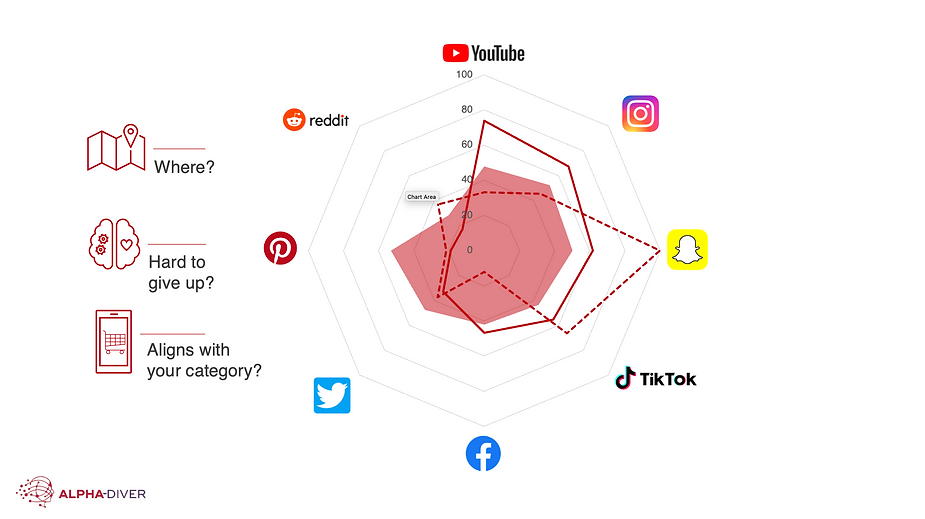This article originally appeared in ESOMAR’s Research World
Marketers everywhere pine for ways to stand out from the cacophony of digital noise consumers navigate each day. Headlines abound espousing the importance of making every media dollar work harder in actually driving consumer behaviour. And while brands’ and retailers’ fortunes are made and broken in the Omni-universe of social media, truly strategic insights are scarce.
A study conducted by researchers at the University of California-San Diego estimated that the average person is exposed to the equivalent amount of 34GB of data in a given day. Anyone who’s tried opening a 34GB file on their laptop will attest that this amount of data challenges even the tech world’s best processors. And so it’s unimaginable how the brain can manage this quantity of stimuli.
And the simple fact is, it doesn’t. Just like an overheated laptop, the brain can’t process this quantity of stimuli, and so it filters out the vast majority. And the precious few messages that make it through are incredibly rare.
In spite of all this ‘cognitive competition,’ most social media planning begins and ends with “where are the eyeballs?” Most marketers are left to merely put content where they know their audience will be, and hope / assume that merely “showing up” will stand out from all the competitive noise – not to mention translate to real life purchase behaviour.
However, as with any facet of consumer decision-making, there IS a science that decodes a more intentional, strategic, and ultimately effective means of meeting consumers in the digital marketplace. It begins with the four drivers of social media…
A person logs on to a given social platform primarily driven by one of four motivations:

To learn: find recipes, new vacation spots, etc.
To connect: the ostensible purpose of social media; to bond with one’s tribe.
To explore: to wander a bit and take a mental vacation – fail videos, anyone?
To brag: look at me; I’m helicopter skiing.
As you see these drivers, they make sense. It’s easy to scroll through a given feed and identify each of them in action. And they’re central to the decision-making ‘availability’ that a given user represents.
If I’m here to learn, deeply immersive, sensory videos will not persuade.
If I’m here to brag, rational, comparative appeals need not apply.
And so on…
And while this is THE unlock to more effective digital communications, few brands are applying this (we’ve seen those that do drive double-digit increases in their results).
Which brings us to the social media Behavior Equation: behavioural science (neuroscience, to be exact) provides a simple equation by which to diagnose, predict, and leverage the true drivers of consumer behaviour when it comes to social media. There are three elements to consider:
Where are they? Yes, it’s important that your audience is actually on the platform. And most media buyers utilise demographic and behavioural data to get the right message in front of the desired audience. But there’s more to the story…
What are they attached to? This is where the plot thickens: how hard would it be for them to give the platform up? There are lots of things people do that they aren’t really engaged with. This is rife within social media, and correlates directly with their ultimate buying behaviour – or lack thereof – based on social media content.
What aligns with their buying psychology? The third element in the Behavior Equation. Essentially, does their psychology relative to the social medium align with their buying psychology relative to your category (per the four motivations described above)?
When all three of the above align, you’ve mined cognitive gold in terms of influencing real-world behaviour. But if even one element is misaligned your content will merely wash into the sea of digital noise.
Consider an example pulled from our longitudinal database, focusing on the social media Behavior Equation for Gen Z consumers, age 18-25:

Merely looking at WHERE these young consumers are cuts short the other two crucial factors that translate to actual behaviour. We see from our database that, in general, Snapchat is uniquely aligned with the mindset of younger consumers 18-25. And while influence certainly varies by category (i.e. for fast food, it could be one platform, for personal care products, another), this guides truly breakthrough ways to plan media, and create content, that will hit the mark.
Which leads to the next point: simply being in the right place does not guarantee success. The creative content needs to align, as well. Continuing the insight from our database above regarding Gen Z, the anatomy of an influential creative execution is comprised of four requirements:

Clearly, the demographic-focused criteria provided by most platforms fall short when it comes to truly influential media planning and buying. But with some straightforward consumer insight gathering, and brand strategy reflection, social media content can become dramatically stronger in driving real-world purchase behaviour – even among the most fickle and mysterious of consumer cohorts.




